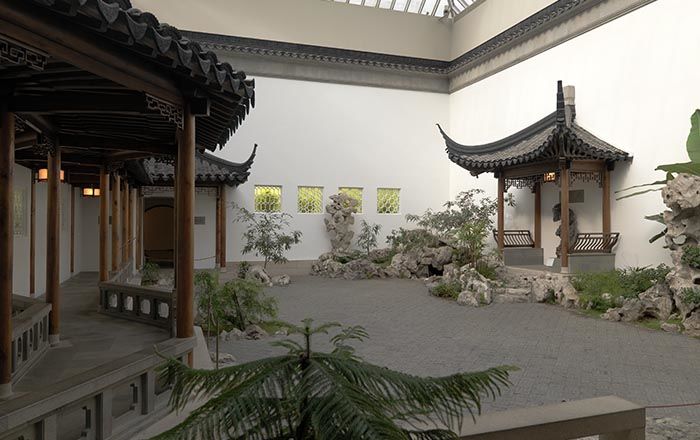Eight Faces
Hatakeyama Kōji Japanese
Not on view
Hatakeyama Kōji’s studio is in his native Takaoka, a long-established Japanese metalworking center famous for bronze casting. He grew up in Takaoka and graduated from Kanazawa College of Art in 1980, where he studied metal casting. He employs bronze techniques developed in ancient Mesopotamia and refers to bronze as “a material with memories of a thousand years.” Hatakeyama used earthen tones on the exterior surface of this bronze vessel to create an abstract surface. The artist applied miso paste and vinegar to produce vivid tones and an expressive texture while using precisely applied gold foil to line the interior. The patterns and colors that appear on the surfaces of his works result from various chemical reactions and can be read as stylized landscapes. His use of gold foil on the interior expresses a radiant inner world without darkness. Most of Hatakeyama’s works are functional containers traditionally used in formal tea gatherings or for storing incense. Bronze has always been his chosen medium, and the lidded box is his favored format. Unequivocally modernistic in appearance, Hatakeyama’s boxes also resonate with many of the characteristics found in historical Japanese works of art.
